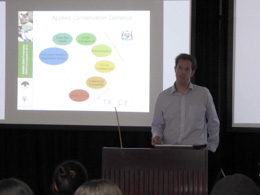Asura International Seminar
Tuesday November 24th, 2015. 13:00-14:00
2015年11月24日(火)13:00-14:00
Large conference room, Primate Research Institute, Inuyama
霊長類研究所 大会議室


Talk
Dr. Robert Ogden
Wildlife Research Center, Kyoto University
Title: Wildlife DNA forensics: Genetic analysis for conservation law enforcement
Abstract:
The use of molecular genetic analysis to identify human evidence has revolutionised forensic science and is now an established tool in law enforcement. Alongside human DNA, the analysis and identification of wildlife DNA is also routinely used in some countries to support the investigation of wildlife crimes, such as poaching or the illegal trade in endangered species1. Wildlife DNA forensics is used to address questions of species identity, captive breeding and geographic origin, as well as individualization across multiple species. This complexity, combined with limited resources for wildlife law enforcement mean that the field is developing slowly and capacity for wildlife DNA forensics is not always available to biodiversity hotspot countries with the greatest need2.
This presentation will introduce the field of wildlife DNA forensics, explain the key scientific questions involved, from phylogenetics to familial relatedness, and the approcahes being used to tackle them. It will also explore the transition from academic research to applied forensic genetic analysis and consider how laboratories around the world are starting to perform DNA testing to support wildlife law enforcement and its role in biodiversity conservation.
2. Ogden R (2010) Forensic science, genetics and wildlife biology: getting the right mix for a wildlife DNA forensics lab. Forensic Sci. Med. Pathology, 6(3): 172-179